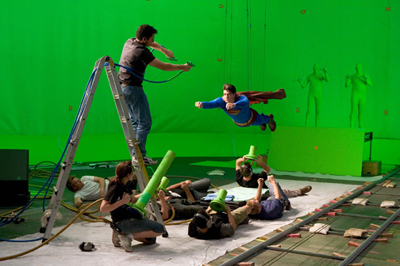Mmmmmmmm.... Green (Screen) Beeeer...
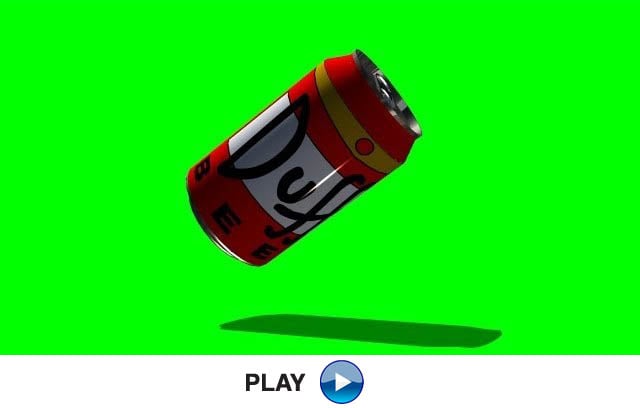 Saint Patrick’s Day is almost here and everywhere you look people are finding their inner Irish and going green. Well, there’s nothing greener at Rosco than our green screen products, so today’s post is dedicated to sharing what we know about green screen paints and technology (it all applies to blue screen paints as well, but around St. Patrick’s Day, green is the theme).
Saint Patrick’s Day is almost here and everywhere you look people are finding their inner Irish and going green. Well, there’s nothing greener at Rosco than our green screen products, so today’s post is dedicated to sharing what we know about green screen paints and technology (it all applies to blue screen paints as well, but around St. Patrick’s Day, green is the theme).
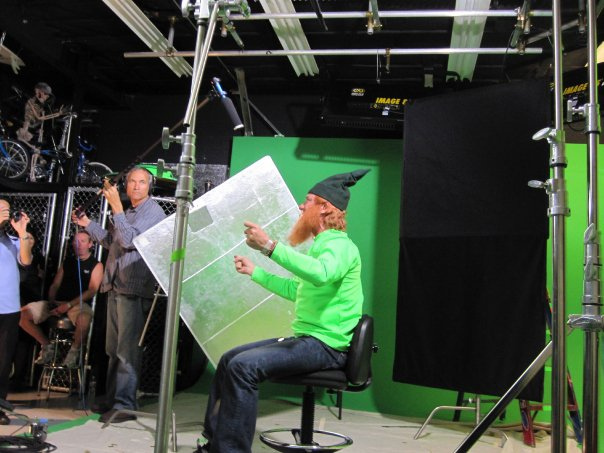
A behind the scenes, green screen shot of Gerard Butler as a leprechaun in 'Movie 43'
A good start is deciding whether to use blue screen or green screen – on days other than March 17th, of course. Most experts say if you’re shooting on film, use blue screen, and if you’re shooting digital/HD use green screen. The blue layer of the film emulsion is more sensitive, making blue screen the more effective choice, while the chips in most digital/HD cameras are more sensitive to green so green screen is more effective.
However, you have to couple that rule of thumb with the subject matter you’re shooting in front of it. For example, if your set or costumes have a lot of blue elements in them, such as Cookie Monster’s blue fur, then green screen would obviously be a better choice no matter what medium you’re shooting on.
Painting A Green Screen
It’s tempting to buy your green screen paint at the paint store, because it’s usually cheaper and more convenient than the our keying products. But here’s the difference … and it’s crucial: Rosco green screen paints, including Chroma Key and DigiComp, are manufactured using a single-source pigment. This means that instead of mixing together different colored pigments to manufacture the green paint, which is what happens when a paint store mixes a color for you, we use one green pigment specifically chosen for optimal green screen results. All of this results in a purer color that won’t reflect other interference colors - making for a cleaner key.
DotLot Digital Studios illustrates the difference between hardware store paint and Rosco Chroma Key paint in post
All Rosco paints are also manufactured to have an ultra-flat finish. This means there is no sheen or gloss in the finish at all, which is important because sheen/gloss in your green screen will appear as white or yellow on camera and may spoil your key. The “flat” finishes available from paint or hardware stores will have a sheen to them when lit for camera.
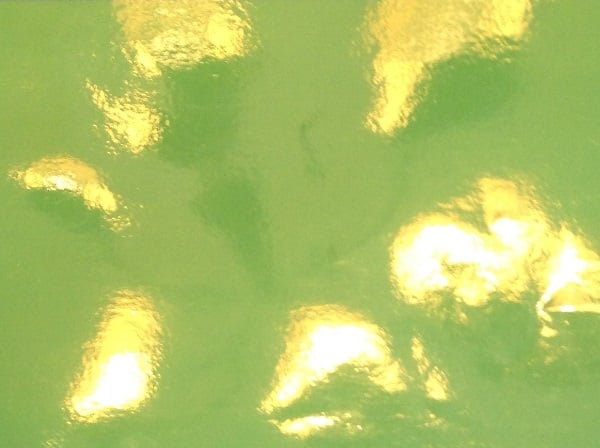 Yellow light reflections on a gloss green surface
Yellow light reflections on a gloss green surface
There are two kinds of compositing colors – Chroma Key and Digital. The main difference between the two is simply the precision of color. Rosco’s original Chroma Key paint was designed for the analog Chroma Key Switchers that would take out the entire band of green or blue and replace it with an image – usually a weather map. Today’s digital compositing software has the ability to lock onto very narrow bands of colors, which allows for more precise and easier keying in post.
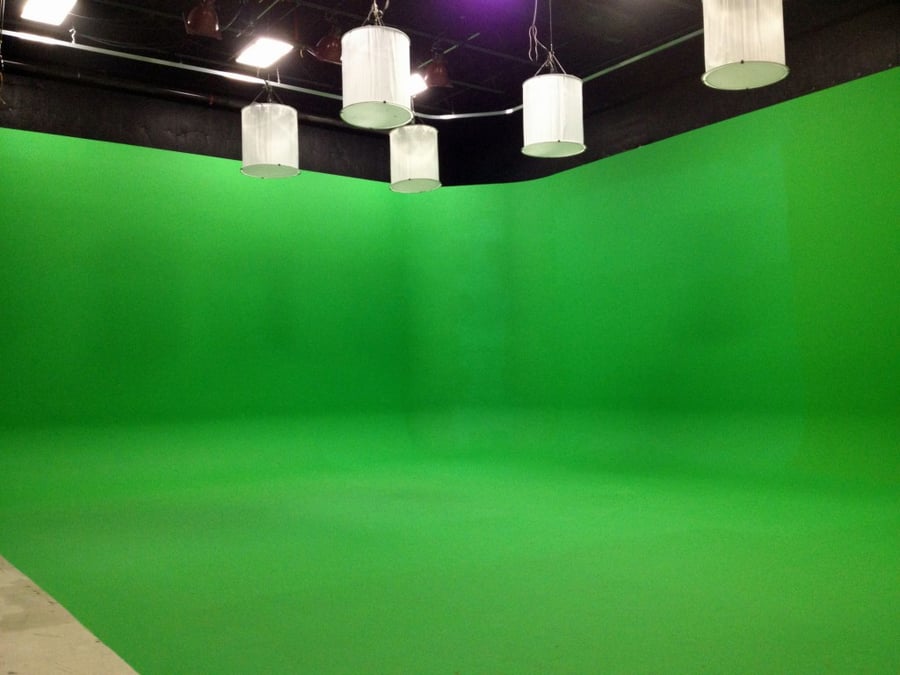 Cinequipt's Studio C painted in Rosco's Chroma Key Green
Cinequipt's Studio C painted in Rosco's Chroma Key Green
As a rule of thumb - most green screen projects will work great in studios painted with #5711 Chroma Key Green. In fact, Chroma Key Green is our #1 selling paint product - it is easy to apply and often times will cover in one coat. As you're planning to paint your green screen, first ask yourself what kind of keying you plan on doing in post. If the edits will be relatively simple and the shots won’t have complex special effects, then Chroma Key Green is the answer.
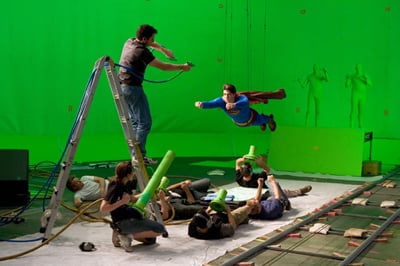 Brandon Routh as Superman suspended on cables in front of a digital green screen.
Brandon Routh as Superman suspended on cables in front of a digital green screen.
However, if you believe your keying will be more complicated, then you might consider using one of our digital green paints. These high-end paints are great for making it easier to key in post – but digital paints like Rosco’s DigiComp Green can add significant cost to your project. We recommend using digital paints only if you need them for very complex keying work such as high speed capture for extreme slow motion work, characters suspended on wires or motion capture.
UPDATE: November, 2015
Rosco's DigiComp paint has been reformulated to be easier to apply and is now called DigiComp HD. Rosco's Chroma Key paints, previously only available in gallon and five-gallon containers, are now available in convenient and affordable quarts.
Lighting A Green Screen
A key factor in lighting your green screen is keeping the light level on the green screen even and shadow-free. The best way to achieve this is to light the green screen separately from the subject using a source that produces a soft, easy-to-blend beam. You can make any light source soft and easy-to-blend by placing Rosco Diffusion Filters on your lights to soften the edges of the beam.
If you’re shooting a green screen wall, another good technique is to place Rosco CalColor #4430 30 Green on the lights that are aimed at the green screen. This will turn any light into a pure ‘green screen green’ source by removing any interfering colors from the output of the light. If you’re experiencing a green halo on your subject from the green bounce off the wall, use CalColor #4730 30 Magenta on some lights aimed from the ceiling at the back of the subject. CalColor 30 Magenta is the complementary color to the bounced light coming off a green screen and will neutralize any of the offending green spill.
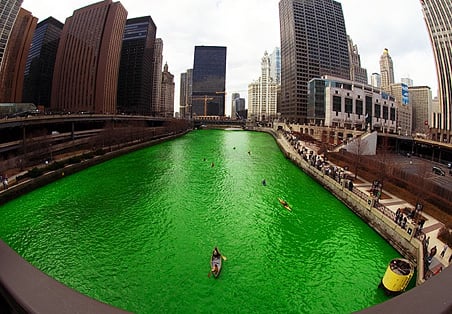 Celebratory green spill into the Chicago River - guess which holiday this celebrates!
Celebratory green spill into the Chicago River - guess which holiday this celebrates!
If you have any other green screen questions, feel free to reach us at spectrum@rosco.com. Happy St. Patty’s Day and Cheers from all of us at Rosco!

